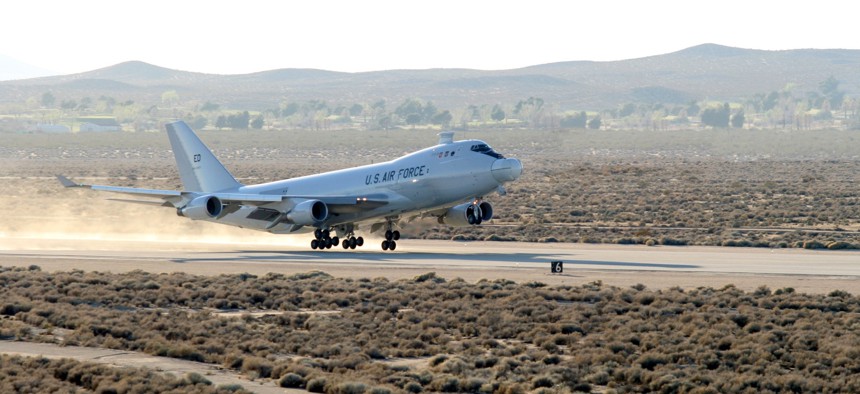
The YAL-1A Airborne Laser, a modified Boeing 747-400F, takes off from Edwards Air Force Base, Calif., on March 15, 2020, for a five-hour test mission. U.S. Air Force/Kellie Masters
Give Lasers Back to the Missile Defense Agency, Lawmaker Says
Rep. Langevin slams Trump-administration decision to defund MDA research.
A key House Democrat wants the Pentagon to reassess a Trump administration decision to halt the Missile Defense Agency’s research into laser interceptors.
That decision to move directed energy-related funds to other defense organizations, Rep. James Langevin, D-R.I., argues, could prevent the technology from being used to defend the United States or deployed troops.
“If we move these programs out of [the Missile Defense] Agency, I believe that we will keep them in the labs, the technology, the labs, to test them to death, and they'll never get to the warfighter,” Langevin said Tuesday at a House Armed Services strategic forces subcommittee hearing. “At best, it's wasted money. At worst, our systems can't keep up with what adversaries are developing.”
For decades, researchers have pursued lasers’ promise as a cheaper alternative than missile interceptors. However, despite years of studies and tests, the technology has not moved out of research and development. The Pentagon’s 2019 Missile Defense Review said “laser technology holds the potential to provide a future cost-effective capability to destroy boosting missiles in the early part of the trajectory.”
But in May 2020, Mike Griffin, then defense undersecretary for research and engineering, said the Pentagon would not invest in aircraft that could shoot down enemy missiles with lasers, citing limitations of the technology. The funding was not included in the Biden administration’s fiscal 2022 budget request sent to Congress last month.
“It was a [Defense] Department effort to consolidate directed energy work within the department,” Vice Adm. Jon Hill, Missile Defense Agency director, said during Tuesday’s hearing. “When these capabilities reach the power levels, and the sizing and levels that we need — beam controls, stability, lethality capability — then we will adopt those technologies and bring them into the missile defense system.”
Hill said he does not have “a good look into the funding” since it’s been removed from his budget.
“I'm really disappointed that the President's budget canceled MDA’s directed energy program,” Langevin said. “This program provides promising ballistic missile defense technology and it really addresses cost imbalances between offense and defense.”




